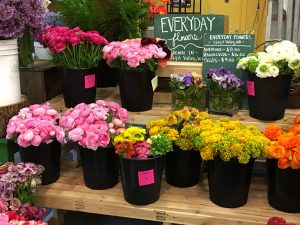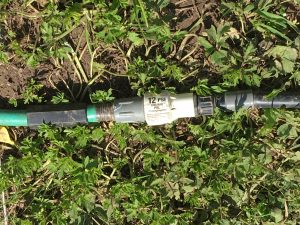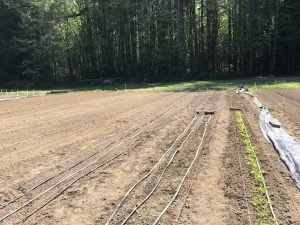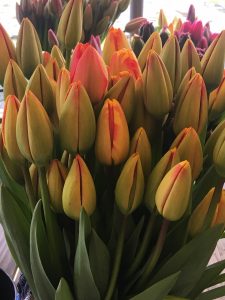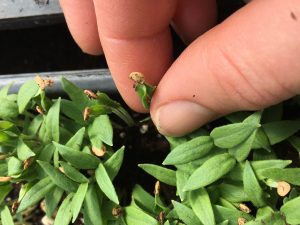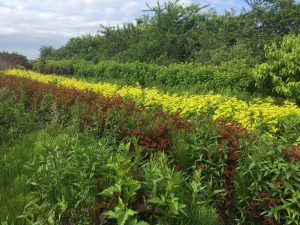
I spent the week of May 21 through the 25th working at Jello Mold Farm in Mt. Vernon Washington. My internship proved to be a wonderful learning opportunity that aligned perfectly with my learning goals. Owners Diane and Dennis were incredibly generous, sharing their vast amounts of knowledge gained through years of experience growing flowers for the wholesale cut flower market.
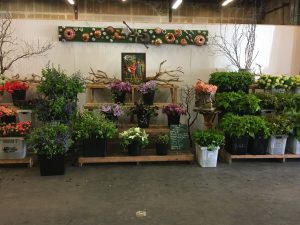
I started the week off learning how to harvest and package flowers and foliage for the wholesale market.

Sweet peas are a popular and lucrative crop sold at the Seattle Growers cooperative. Dennis and Diane start their seeds in soil blocks in November and plant out in their hoop house in February. They lime the soil to maintain a ph between 6-7.5, the plants are watered regularly and pinched back when young to encourage branching. String trellis netting is installed from ground to the top of the hoop house roof. Harvesting last from late April to early July.
Sweet Peas are sold 15 stems per bunch, the minimum harvest length is 7 inches. Harvest stage is done when the bottom two flowers have opened. The bouquets can be stored up to five days in cooler before selling. The average vase life is five days for Sweet Peas.
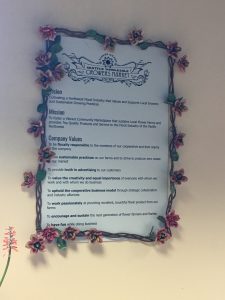
On Wednesday morning we were up by 2:30 am to make a delivery to the Seattle Wholesale Growers Market Cooperative. Last year Dennis and Diane purchased a refrigerated truck. This enables them to load their wares the night before, it also allows for easier transport of pre loaded racks.
I was impressed with the cooperative spirit of the market members. Diane introduced me to growers, they shared helpful advice and freely answered my questions on crop selection. Fellow members helped one another unload and set up their displays. The market manager Molly coordinates crop planning with the growers to ensure that there is ample stock and variety for the customers and ensures that the market is not flooded with the same products. This benefits buyers and growers, helping to maintain the cooperative spirit that is the foundation of The Seattle Wholesale Growers Market.
